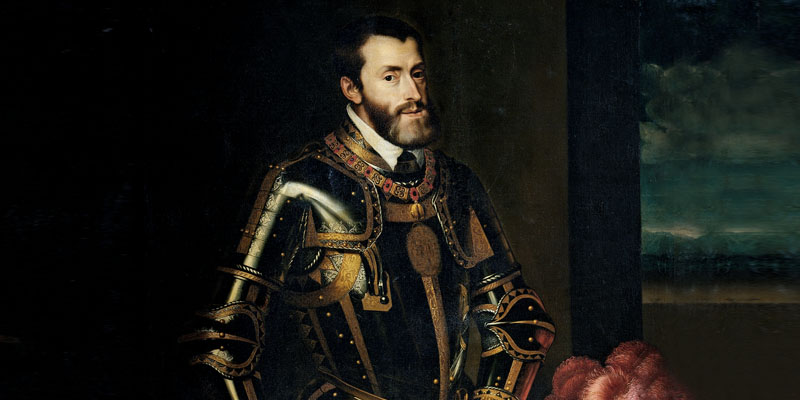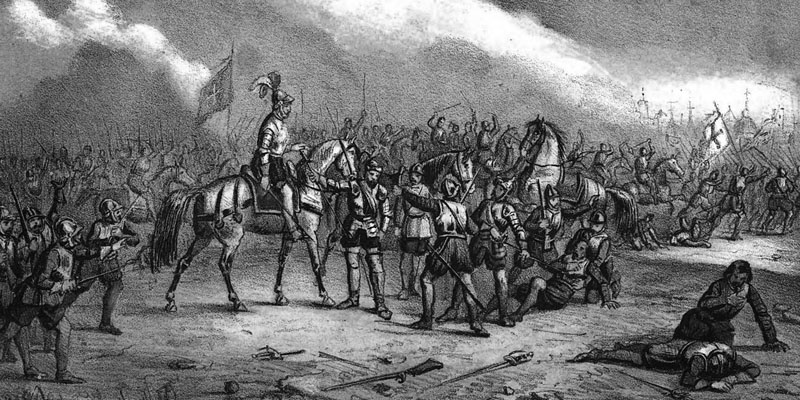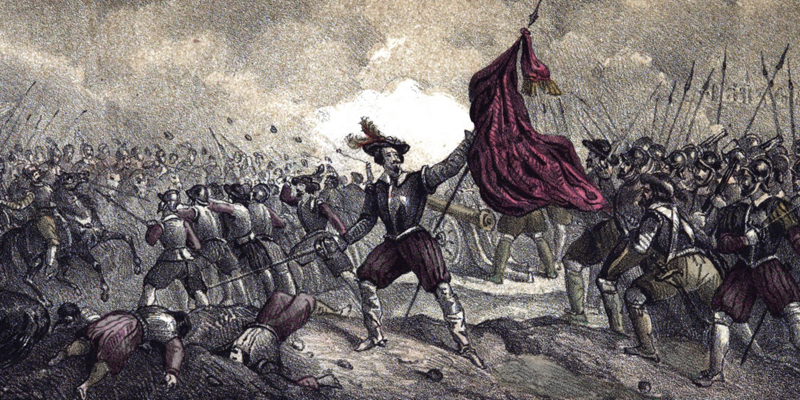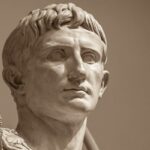We explain what the empire of Carlos V was and how was his reign in Spain. In addition, the Germanías and the uprising of the communities of Castile.

What was the empire of Carlos V?
The Empire of Carlos V was a political entity headed by King Carlos I of Spain (Carlos V of the Holy Roman-Germanic Empire) between 1516 and 1556. It was The greatest empire of his time And his possessions were largely bequeathed to his son, Felipe II, with the exception of the territories of the Roman-Germanic Empire, who passed Carlos, Fernando I.
Carlos I was grandson of the Catholic Monarchs, of whom he inherited in 1516 the territories of the crowns of Castilla and Aragon, including the Indies (the Spanish possessions in America). It was the first monarch who reigned as the only king in Spain. Since he came from Flanders, his arrival on the throne of Spain caused some internal conflicts, such as the uprising of the communities of Castile, to which other surveys were added, such as Valencian Germanies.
Carlos He was also appointed Emperor of the Holy Roman-Germanic Empire in 1520, which expanded the extension of his empire. During his reign, the conquest of the Aztec and Inca empires was completed in America, and administrative reforms were implemented, such as the creation of the Council of the Indies. Carlos also filed political and military conflicts with France, Protestant Reform and the Ottoman Empire. Abdicated in 1556 in favor of his son, Felipe II.
The coronation of Carlos I of Spain
When his maternal grandfather, Fernando II of Aragon, died in 1516, Carlos de Habsburg, who had already inherited the territories of Burgundy of his paternal grandmother, It became crowning king of Castilla y Aragón and began his trip to the Iberian Peninsula.
The new monarch He did not know Spanish and was accompanied by Flemish counselors that occupied the most important positions in court and the church.
Once crowned, Carlos I summoned Cortes to vote for new taxes. In Castilla, the reaction was immediate: Protests arose that asked the king to remember his obligation to reside in the kingdom and respect his laws. Similar protests emerged in Aragon.
The communities of Castilla (1520-1522)
Causes of the uprising of the community members
The growing discontent with the king led to the uprising of the communities of Castile, or the community members, which began in 1520. Most of the cities of the central area of the kingdom (such as Segovia, Toledo and Salamanca) They rebelled against the monarch’s authority.
The causes of the rebellion were complex:
- The Castilian aristocracy saw as a humiliation that the king had delivered the administration of the kingdom to flamenco counselors and would have left Cardinal Adriano de Utrecht, originally from the Netherlands, as governor of the kingdom in his absence (when Carlos I had to travel to Germany in the context of his designation as an emperor of the sacred Roman-Germanic empire).
- Carlos had used the money from the new taxes to achieve his choice as Emperor of the Holy Roman-Germanic Empire.
- Carlos had dismissed the request to learn Spanish and respect the laws of the kingdom.
- The urban bourgeoisie feared that he returned to the traditional policy of exporting the gross wool to Flanders, which would be detrimental to the Castilian textile crafts.
The uprising of the communities of Castilla

When Carlos I left Castilla in 1520, A revolt broke out in Toledo that soon extended to other cities. The royal authorities were deposed and replaced by new community councilors. After the Medina del Campo fire for the king’s troops, the insurrection was generalized.
The community members created the Holy Board in Tordesillasa rebel government that demanded the withdrawal of taxes (called “services”) approved in the Courts, respect for the laws of the kingdom and the withdrawal of flamenco advisors.
The community members tried to convince Juana I, Queen of Castilla and mother of Carlos I, who was held in a castle of Tordesillas since 1509, that he put himself in front of the rebellion and support the communities. But the attempt was not successful.
The rebellion also led to antiseñorial revolts in some areas, which caused the nobility to begin to move away from the community members. Internal dissensions and antiseñorial radicalization of the movement weakened communities.
After the defeat of the common troops in Villalar in 1521, all cities left the movement, except Toledo that was finally dominated in 1522. The community leaders Juan de Padilla, Juan Bravo and Francisco Maldonado were executed. The common defeat meant the beginning of absolutism in Castilla and the reinforcement of the king’s power.
Las Germanías (1520-1523)

The Germanías were Survey against the nobility that took place In the kingdoms of Valencia and Mallorca From 1520. The causes of the Germans rebellion were:
- The economic crisis,
- the epidemics that felt over the kingdom of Valencia,
- the social discontent of artisans and small merchants with the urban oligarchy (great merchants) and the nobility.
The rebellion of the popular classes began in the city of Valencia in 1520shortly after the city fled from the city for the plague. Soon the revolt extended to the south of the kingdom.
The agermanats (of Germà“Brother” in Valencian) also attacked the Mudejares (Muslims who continued to practice their religion), who, in addition to rejecting for religious reasons, accused of being submissive with the nobility and the crown.
Since Valencia was not as important as Castilla for the power of Carlos I, he reacted slowly. However, he finally ordered the viceroy of Valencia to repress the conflict. This led to a direct confrontation between the agermanats and the Valencian nobility. The rebellion in Valencia was defeated in 1522, and the revolt that exploded in Mallorca was suffocated in 1523.
External conflicts
Carlos V reigned over a wide territory, which included the crowns of Castilla and Aragon, the Holy Roman-Germanic Empire and Spanish possessions in America and Asia. After the conquest of the Inca and Azteca empires, the Council of the Indies created (1524).
In Europe he faced France, mainly for Italian territories like Naples and the Duchy of Milan. Although Carlos won important victories, such as the battle of Pavia (1525), the confrontation continued during his son’s reign, Felipe II.
Carlos V’s troops also faced German Protestantssince the emperor defended Catholicism against Protestant reform. Carlos won an important victory in the battle of Mühlberg (1547). However, a short time later he was forced to agree La Paz de Augsburg (1555) that accepted the division of the Harce Empire into Catholic and Protestant states.
During the reign of Carlos V there was also the Ottoman siege of Vienna, in 1529, by Solimán the Magnificent. A coalition of which the emperor was part of defeating the Ottomans, both on that occasion and in a second attempt, in 1532, but hostilities continued during the following years.
Continue with:
References
- Ferdinandy, M. de (2023). Charles V. Britannica Encyclopedia. https://www.britannica.com/
- García Prison, R. (1981). The Germanías de Valencia. Peninsula.
- Maravall, Ja (2021). The communities of Castilla. Alliance.
- Parker, J. (2019). Carlos V. A new life of the emperor. Planet.
- Pérez, J. (2001). The community members. The sphere of books.





